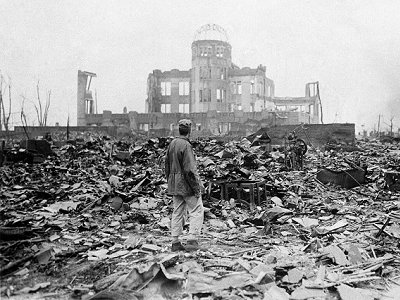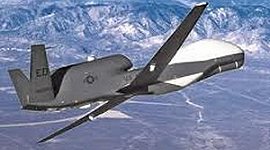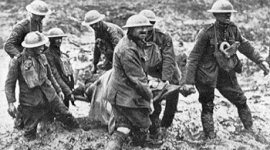
THE DOUBLE DESTINY OF AUGUST 6
The date of August 6 presents us with a paradox so deep and poignant you might have thought it had been engineered by someone to make a point.
August 6 is the day the global Church marks the transfiguration of Jesus: the fleeting moment when his appearance on the mountain was changed and the glory of God was spectacularly revealed (Luke 9:28-36). For the chosen disciples it was compelling evidence they were in touch with someone divine.
This is also the day the first nuclear weapon was detonated over Hiroshima in Japan. It is hard to imagine a more fateful and unsuspecting place than Hiroshima as it woke that morning: the dawn of the nuclear age. Post-war generations are the first to have the capacity to destroy themselves not once, but hundreds of times over.
The glory of God and the inhumanity of man.
Both events involved the unleashing of awesome power and rendered onlookers speechless. At the transfiguration, Peter mumbled some inappropriate words about marking the event with a shrine. On viewing photographs of the devastation at Hiroshima, Robert J. Oppenheimer, the pioneer of the atomic bomb, was left dumb-struck at the suffering his invention had unleashed. The testimony of survivors showed how difficult it was to find words to express their experience. Both events produced blinding light. One illuminated the person of Jesus, the other burned the outline of those it killed onto pavements like police tape marking the posture of dead men. And both dealt in death. We know the history of Hiroshima and the 140,000 who died there, but we forget the way death hung like smog over the transfiguration, where Jesus was pictured talking with Moses and Elijah about his impending death.
The detonation of a nuclear weapon is a shocking symbol of a broken world; the sacrifice of Jesus on the cross the response to a fractured world. The suffering of many at Hiroshima brought to an end the suffering of even more across Asia and the Pacific region; the suffering of one at Calvary we believe will one day bring to an end the injustice of a cruel world and inaugurate a new one. I do not wish to seem trite in handling these events in juxtaposition. We should tread carefully round the theme of human suffering because it never happens in the abstract, yet somehow Hiroshima and the transfiguration have become two sides of a coin in the modern era.
A curious element in our developing science is the way new inventions seem only to reduce our sense of personal significance. From weapons testing to human cloning we are left scratching around for what makes us truly human. The answer to this is found in relationship with the man Jesus whose divinity was revealed on that mountain. On August 6 we uncover what makes us truly human on the very day we recall the depths of inhumanity to which we can stoop.
POPULAR ARTICLES

Obama's Covert Wars
The use of drones is going to change warfare out of all recognition in the next decades.

Through A Glass Starkly
Images of traumatic incidents caught on mobile phone can be put to remarkable effect.

What Are British Values?
Is there a British identity and if so, what has shaped the values and institutions that form it?


